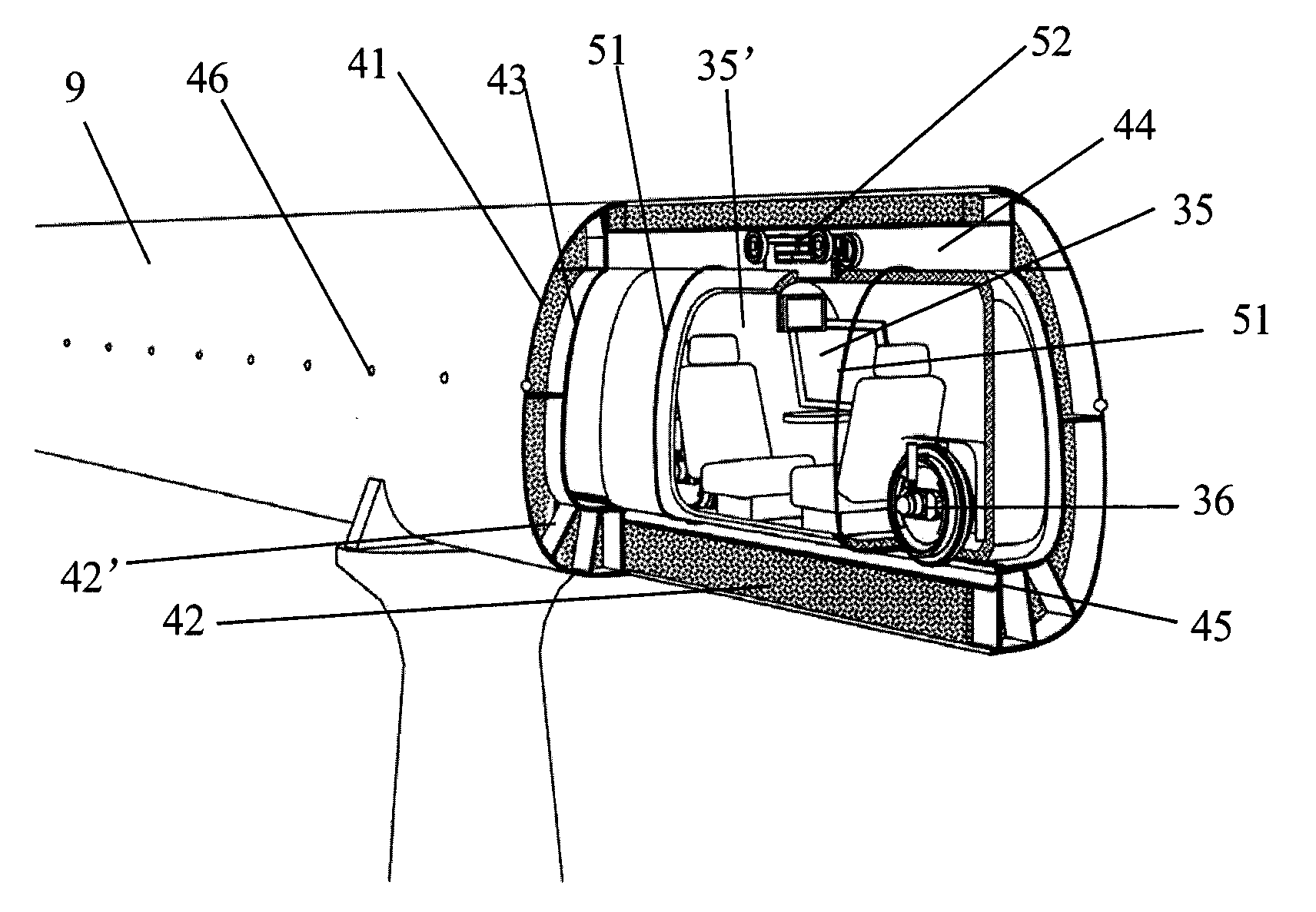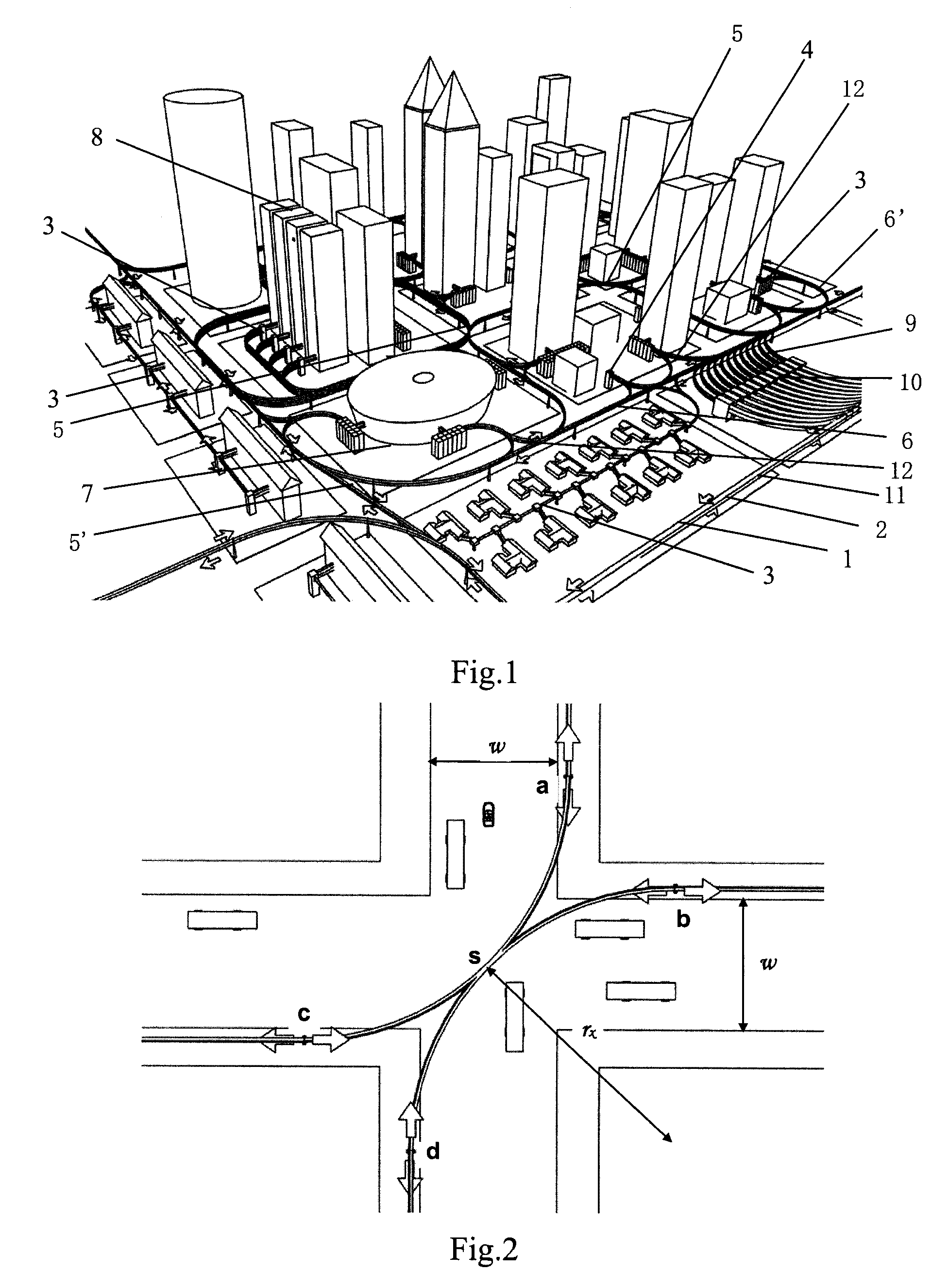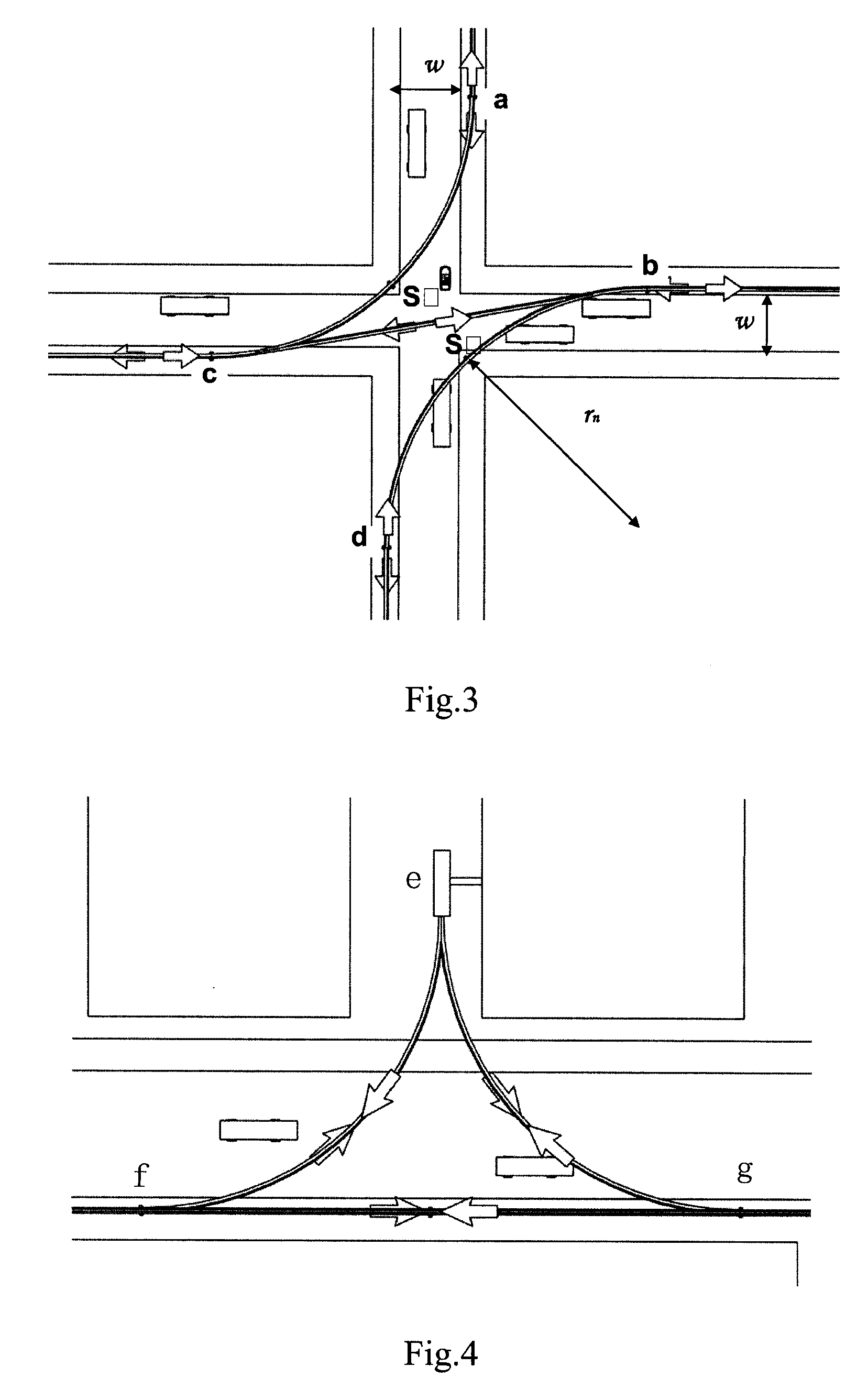Tube car, network of tubes, personal transport system, and control system and control method thereof
a technology of personal transport and tube car, which is applied in the direction of solar cell/heat pipe technology, instruments, roads, etc., can solve the problems of increasing the cost of construction. , to achieve the effect of reducing the cost of construction, and increasing the capacity of line capacity
- Summary
- Abstract
- Description
- Claims
- Application Information
AI Technical Summary
Benefits of technology
Problems solved by technology
Method used
Image
Examples
Embodiment Construction
[0041]Specific embodiments of the components of the transport system and their operation according to the present invention will be more clearly understood from the following detailed description taken in conjunction with the accompanying drawings.
[0042]Referring to FIG. 1, a network 1 of tubes according to an embodiment of the invention includes more tubes 2 combined with the existing blocks or buildings in cities. Upper and / or lower rails are provided in each tube for guiding cars transporting passengers or goods. In this embodiment, the network of tubes may comprise many tubes arrayed in single-layer or multi-layers. Each layer of tubes is loop-typed, in which cars can only run in a single direction. When the network 1 of tubes is designed to include two layers of tubes overlapped, in which each layer is designed to guide cars to travel in a single direction, usually cars traveling in the lower layer tubes 2 move in the opposite direction to cars in the upper layer tubes 2. When ...
PUM
 Login to View More
Login to View More Abstract
Description
Claims
Application Information
 Login to View More
Login to View More - R&D
- Intellectual Property
- Life Sciences
- Materials
- Tech Scout
- Unparalleled Data Quality
- Higher Quality Content
- 60% Fewer Hallucinations
Browse by: Latest US Patents, China's latest patents, Technical Efficacy Thesaurus, Application Domain, Technology Topic, Popular Technical Reports.
© 2025 PatSnap. All rights reserved.Legal|Privacy policy|Modern Slavery Act Transparency Statement|Sitemap|About US| Contact US: help@patsnap.com



